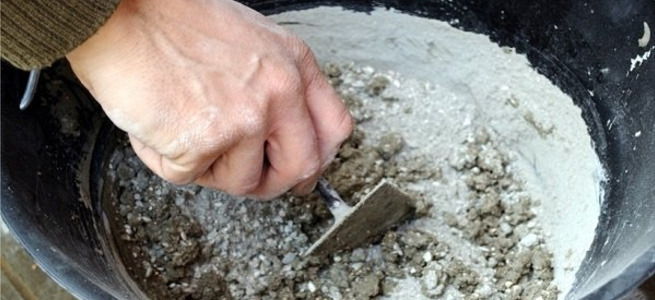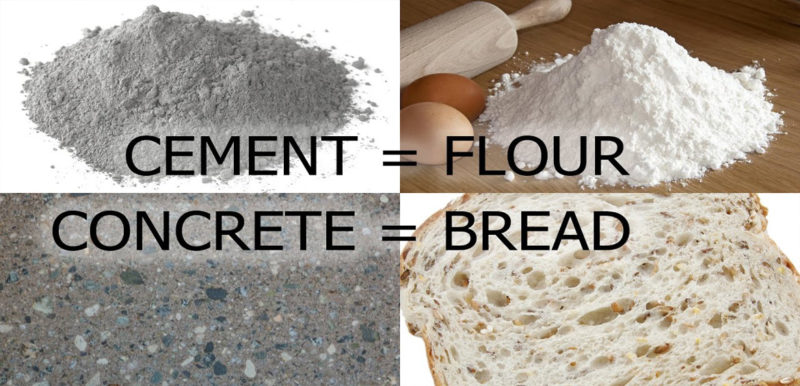Concrete vs. Cement: What’s the Difference?
Concrete and cement are often mistaken as the same material. There are, however, several differences between the two, the main one being the material used to make each of these products. Cement is a fine powder made from limestone, several other minerals, and water. Concrete is made from aggregate, cement, and water. While cement can be used on its own as a material for construction, concrete cannot be made without cement.
Cement

Cement contains limestone, aluminum, calcium, iron, and silicon along with several other components. This compound is put into a kiln and heated to a temperature of 2,700 degrees Fahrenheit. Through this process, the compound becomes a marble-like product called clinkers. The clinkers are ground into a fine powder form and gypsum is then added to make a flour-like form of cement. Water is then added to this mixture. The addition of water creates a chemical reaction that makes the cement harden.
There are two forms of cement: hydraulic and non-hydraulic. The hydraulic form uses water to create the chemical reaction which allows the mixture to harden to create a product that is water-resistant. This type of cement is versatile in its application potential. Most cement products used are hydraulic. Non-hydraulic cement refers to cement that will not harden when water is added. This type of cement is less expensive, however, it requires far more time to dry and is not effective in environments with high levels of moisture.
Cement is used in several applications. It’s used to make mortar which is necessary for plastering and masonry work. It’s also a component in making pipe and drain joints. When structures require protection from weather and chemical erosion, cement is used to create a hard protective surface layer. Cement is also employed in the preparation of construction structures like wells, tunnels, roads, dams, culverts, and bridges.
Concrete

Concrete is a construction material that contains cement and aggregate. Aggregate is made from crushed stone, sand, and rocks. The cement works as a type of adhesive and binds the aggregate together. The amount of cement in concrete generally ranges between 10 and 15 percent of the total mass. These proportions are based on the type of concrete. The aggregate and the dry form of cement are mixed together. Water is then added. Just as with the cement, the water creates a chemical reaction which hardens the material. Before the composite material hardens, it can be poured into a mold to create a specific shape.
The time required for concrete to harden is based on the amount of gypsum used. The hardening process can be shortened through the addition of calcium chloride or sugar. These components influence the hardening crystals that develop as the concrete sets. Additional chemicals may be added to the mixture if it’s expected to be exposed to conditions of extremely cold and hot temperatures.
Cement and Concrete Ingredient Rations
The ratio of cement, aggregate, and water affects the properties of the concrete being made. The ratio between the cement and the water is the most significant. While concrete with not enough water will be difficult to manipulate, adding too much water to a concrete mixture will weaken the structure of the hardened product.
Aggregate makes up a large part of concrete. Between 60 and 80 percent of the mixture is a combination of crushed stone, sand, and rocks. An effective aggregate has a variety of different rock sizes, with a particular maximum size. The rocks used in concrete aggregate must be durable and free of any other minerals or clay that could potentially absorb water and affect the hardening process.
The high rock content in concrete makes it especially strong. This material is typically used to build decks, sidewalks, roads, driveways, swimming pools, and buildings.
The materials in both cement and concrete are abundant and can be recycled. They are not, however, renewable resources due to the large amounts of energy required to heat the minerals in the cement production process.












Recent Comments